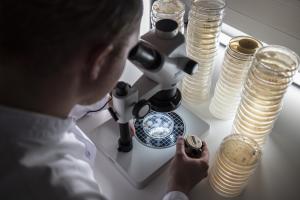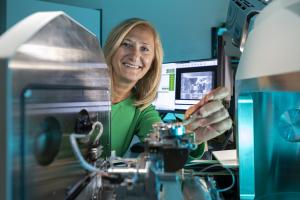Verein des
Hygiene-Instituts des Ruhrgebiets e.V.
Hygiene-Instituts des Ruhrgebiets e.V.
Hygiene-Institut
des Ruhrgebiets
des Ruhrgebiets
Institut für Umwelthygiene und Toxikologie
- Forschung
- Uncompromising Quality
- Our Services
- Drinking and bathing water hygiene
- Environmental Microbiology & Water Hygiene
- Microbiological Material and Hygiene Testing
- Water Hygiene Material Testing
- Hygienic Building Technology
- Limnology
- Environmental and Consumer Protection
- Certification Body HyCert
- Cross-Sectional Topic Toxicology
- Central Analytics
- The Institute
Menu
- Our Goals
Institute Philosophy
History of the Institute
Support Organization
Research and Education
Cooperation
Our Divisions
- Drinking and bathing water hygiene
Environmental Microbiology & Water Hygiene
Microbiological Material and Hygiene Testing
Water Hygiene Material Testing
Hygienic Building Technology
Limnology
Environmental and Consumer Protection
Certification Body HyCert
Cross-Sectional Topic Toxicology
Central Analytics



 We are looking for a Deputy Head for our Environmental Microbiology & Water Hygiene department (m/f/d) to start as soon as possible.
We are looking for a Deputy Head for our Environmental Microbiology & Water Hygiene department (m/f/d) to start as soon as possible. We are looking for a laboratory assistant/technical assistant/technician (m/f/d) for our Environmental and Consumer Protection Department to start as soon as possible.
We are looking for a laboratory assistant/technical assistant/technician (m/f/d) for our Environmental and Consumer Protection Department to start as soon as possible. Christmas 2025 is approaching quickly. In light of the many social and political upheavals we have experienced this year, 2024 now seems almost like a time of calm in retrospect. Much of what we long took for granted—truth, prosperity, democracy, and peace—is increasingly being questioned. The rapid advancement of artificial intelligence embodies both promise and peril. Like Alfred Nobel’s dynamite, its impact will ultimately depend on whether it is guided by people of integrity and goodwill.
Christmas 2025 is approaching quickly. In light of the many social and political upheavals we have experienced this year, 2024 now seems almost like a time of calm in retrospect. Much of what we long took for granted—truth, prosperity, democracy, and peace—is increasingly being questioned. The rapid advancement of artificial intelligence embodies both promise and peril. Like Alfred Nobel’s dynamite, its impact will ultimately depend on whether it is guided by people of integrity and goodwill.
